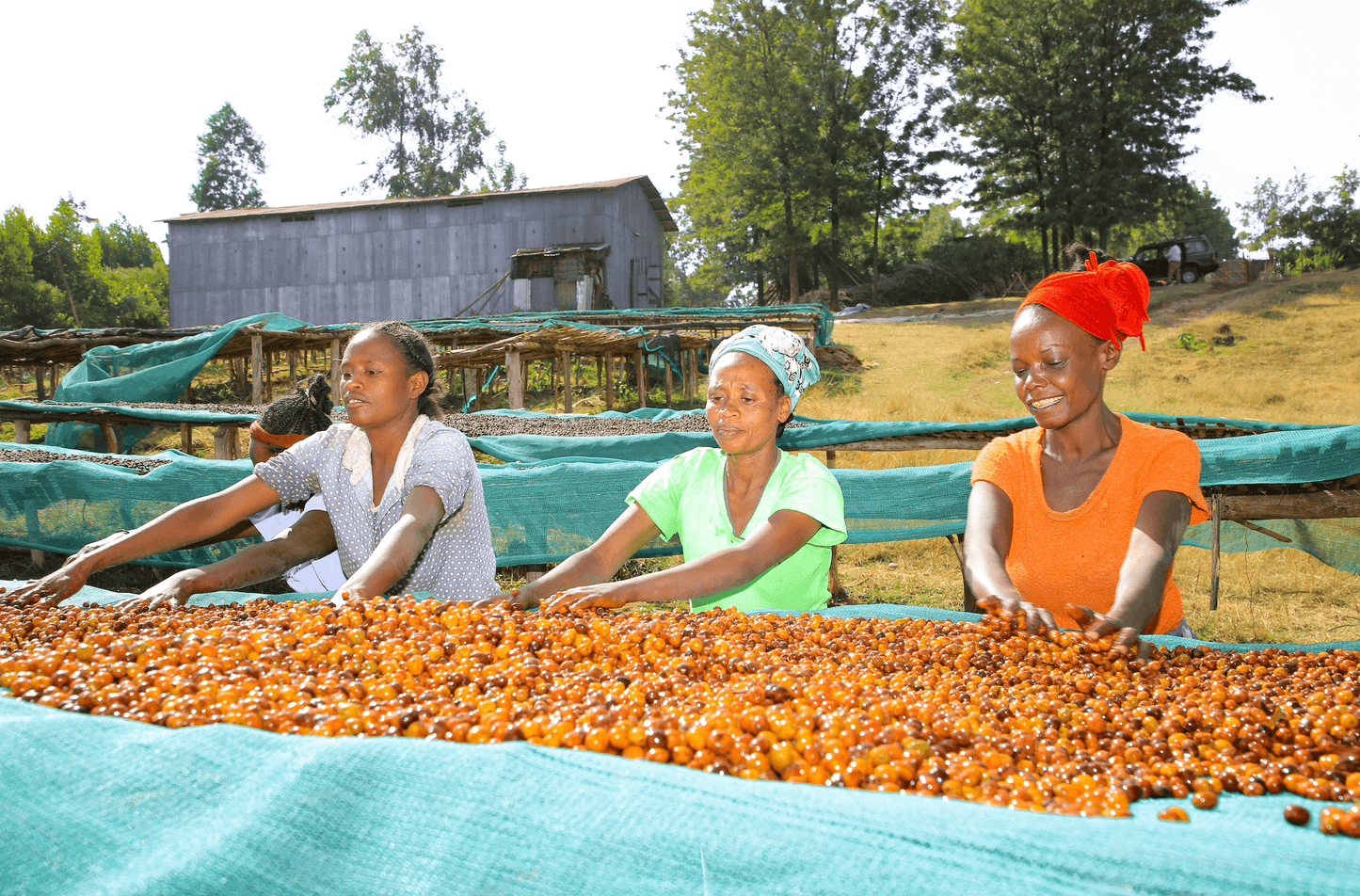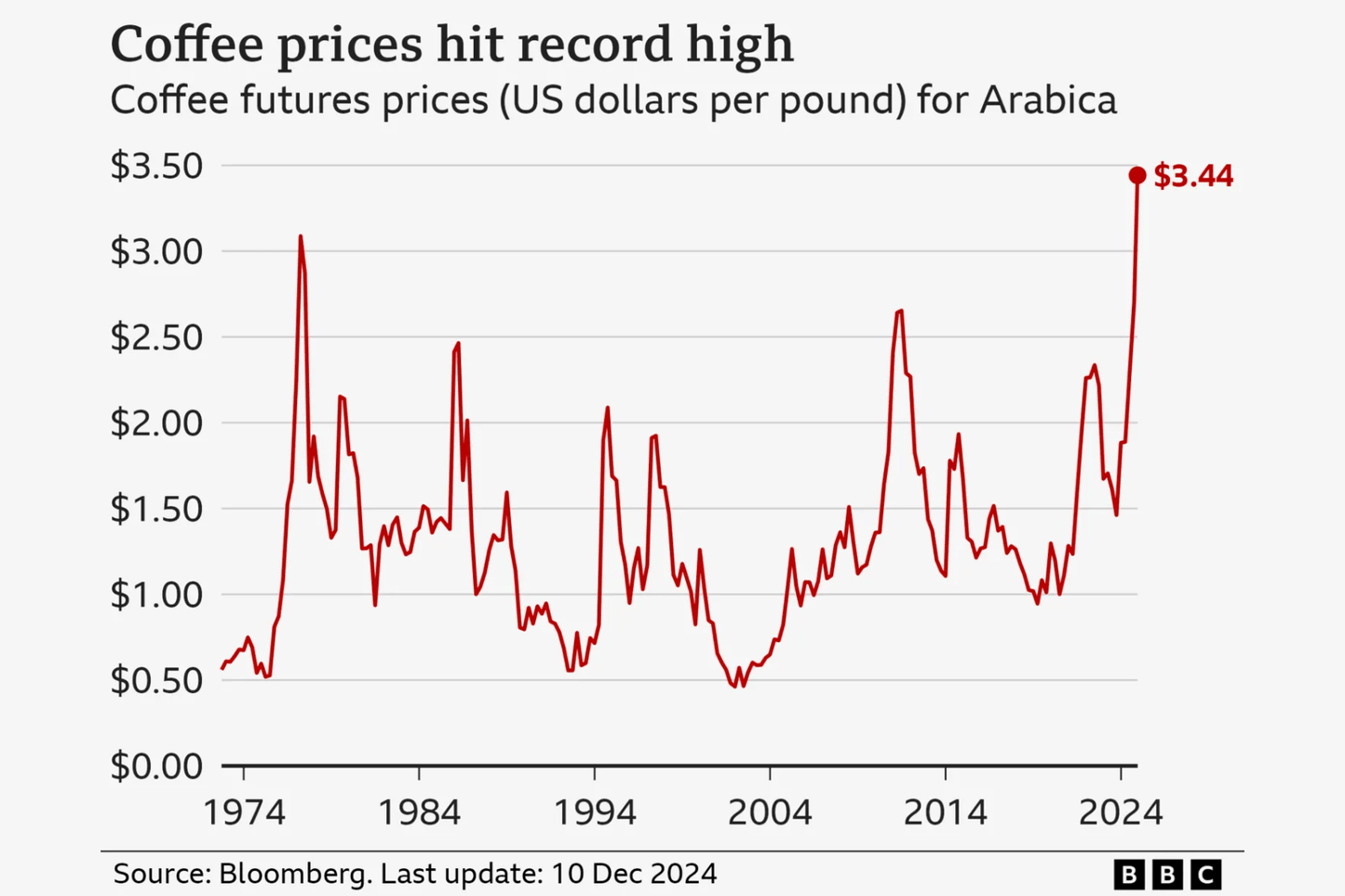Did you know that green coffee beans can be fermented? Well, it is probably not so surprising, as fermenting in the food industry has been around for a long time. It is one of the most popular ways to develop new flavors and give the product longevity.
Even though the fermentation process has always been a part of coffee processing, it is only recently since the specialty coffee community has started experimenting with different yeast/bacteria and various ways of soaking beans resulting in two fermentation methods - aerobic and anaerobic. Aerobic uses the help of oxygen to proceed with the fermenting process, and anaerobic is the oxygen-free process.
This winter in 2022, the founder of Impact Roasters went to Ethiopia to try an anaerobic process with sundried Sidama beans. Therefore, in this blog post, we will talk more about the anaerobic method and the flavors it can develop.
How it works?
The anaerobic method is done by placing the green coffee beans in an oxygen sealed tank with built - in valves. With the help of added yeasts and natural bacteria, CO2 will build up and release all the oxygen and pressure through the valves. The fermentation process can be done with coffee bean cherry, de-pulped in the mucilage, or both. It means that it is primarily sundried or honey processed beans that can be fermented with yeast.
The development stage of coffee beans will change the flavor outcome giving more room for experimenting. After the anaerobic fermentation process, which usually takes around 3 days, coffee beans are dried for around 3-4 weeks, depending on the weather. You can read more about different coffee processing methods in our previous blogpost.
What do you get for this extra step?
By fermenting coffee beans, you will push the boundaries of the coffee flavor. The anaerobic fermenting process will develop acids like lactic acid. The acids will mix and dig deep into the core of the coffee bean and express the fruity flavor touches. It can also bring out the coffee's sweetness, body, and acidity. Most coffee varieties have a bit of acidity because of its pH level, which is between 4.85 to 5.10. However, after the fermentation process, the level of pH reduces to approx. to 3.7-3.9, increasing the acidity of coffee even more.

Our anaerobic coffee experiment
“Is it necessary to do this extra step of coffee bean processing?” you may ask. The answer is - no, but as with everything, taking this extra step could bring you to unexplored paths of coffee flavors.
We tried champaign, beer, and white wine yeast for our anaerobic coffee process experiment. The results brought out some unique flavors of elevated fruity acidity with sweetness, yielding a silky mouthfeel with bouquets of floral aromatics.

So there you go, another addition to coffee production and processing methods. This only shows the diversity and opportunities that you can add to Ethiopian coffee flavors. So there you go, another addition to coffee production and processing methods. This only shows the diversity and opportunities that you can add to Ethiopian coffee flavors. For choosing a perfect cup of coffee, you can visit our coffee guide to get to know more about exploiting the full potential of Ethiopian coffee beans. And if you want to experience a proper Ethiopian specialty coffee and go for a flavorful adventure, visit our online store!





